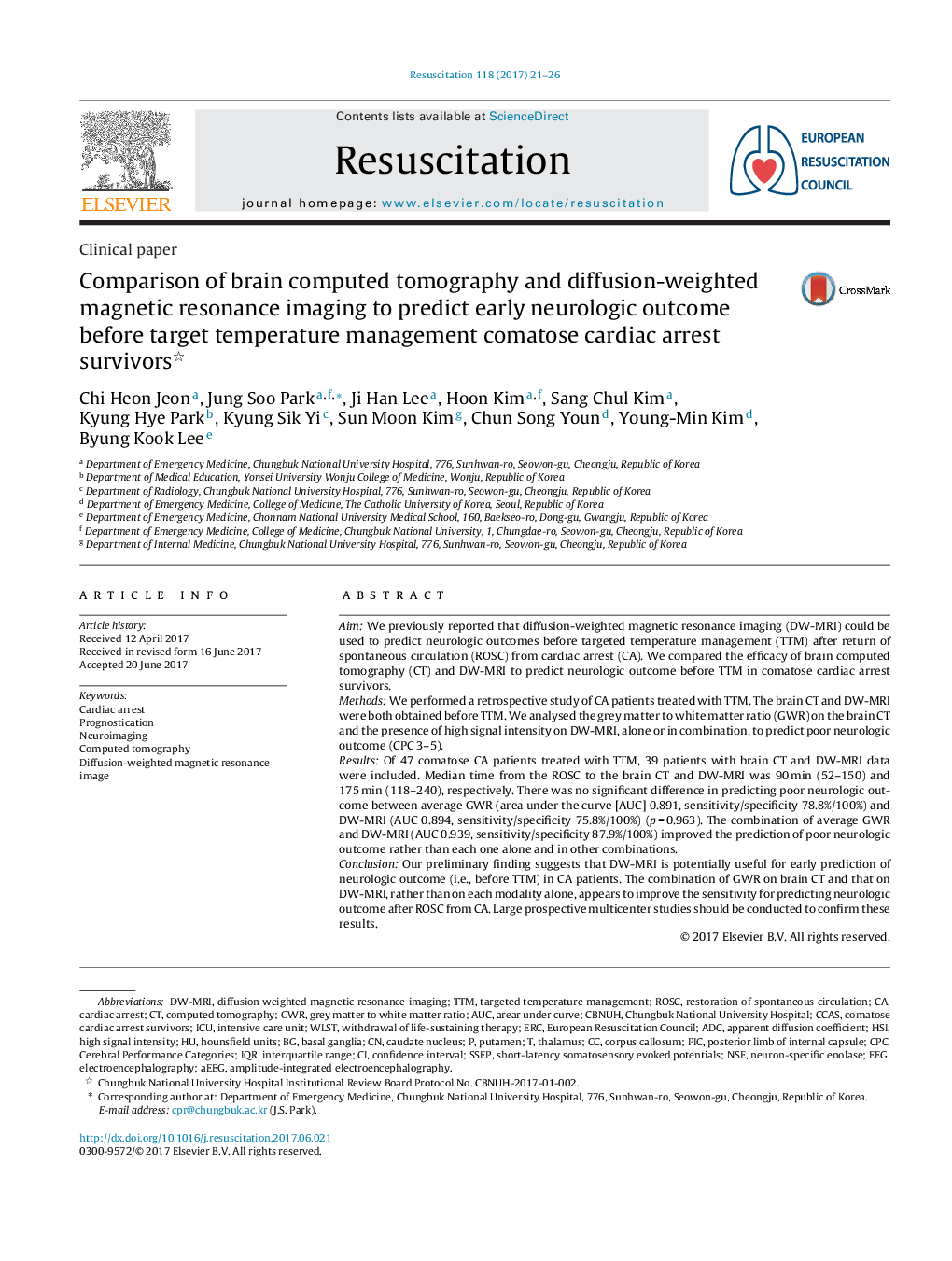| کد مقاله | کد نشریه | سال انتشار | مقاله انگلیسی | نسخه تمام متن |
|---|---|---|---|---|
| 5619822 | 1578966 | 2017 | 6 صفحه PDF | دانلود رایگان |
AimWe previously reported that diffusion-weighted magnetic resonance imaging (DW-MRI) could be used to predict neurologic outcomes before targeted temperature management (TTM) after return of spontaneous circulation (ROSC) from cardiac arrest (CA). We compared the efficacy of brain computed tomography (CT) and DW-MRI to predict neurologic outcome before TTM in comatose cardiac arrest survivors.MethodsWe performed a retrospective study of CA patients treated with TTM. The brain CT and DW-MRI were both obtained before TTM. We analysed the grey matter to white matter ratio (GWR) on the brain CT and the presence of high signal intensity on DW-MRI, alone or in combination, to predict poor neurologic outcome (CPC 3-5).ResultsOf 47 comatose CA patients treated with TTM, 39 patients with brain CT and DW-MRI data were included. Median time from the ROSC to the brain CT and DW-MRI was 90 min (52-150) and 175 min (118-240), respectively. There was no significant difference in predicting poor neurologic outcome between average GWR (area under the curve [AUC] 0.891, sensitivity/specificity 78.8%/100%) and DW-MRI (AUC 0.894, sensitivity/specificity 75.8%/100%) (p = 0.963). The combination of average GWR and DW-MRI (AUC 0.939, sensitivity/specificity 87.9%/100%) improved the prediction of poor neurologic outcome rather than each one alone and in other combinations.ConclusionOur preliminary finding suggests that DW-MRI is potentially useful for early prediction of neurologic outcome (i.e., before TTM) in CA patients. The combination of GWR on brain CT and that on DW-MRI, rather than on each modality alone, appears to improve the sensitivity for predicting neurologic outcome after ROSC from CA. Large prospective multicenter studies should be conducted to confirm these results.
Journal: Resuscitation - Volume 118, September 2017, Pages 21-26
